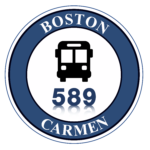Free rides on Green Line end, T hopes Back doors close to halt scofflaws
April 29, 2012
 By Eric Moskowitz | Globe Staff | April 29, 2012
By Eric Moskowitz | Globe Staff | April 29, 2012
If it’s not rush hour and you’re waiting for the Green Line, get ready to come up front: All four branches of the trolley line will soon keep rear doors closed at most above-ground stops, cutting down on free rides as part of a broader effort to discourage fare evasion across the MBTA.
That move comes as Transit Police have written more tickets for fare evasion – up 50 percent from a year ago – and as the MBTA has scattered more employees at surface Green Line stops to encourage payment when rear doors open at peak hours.
The T is also changing the terms of hole-punch passes on the commuter rail to cut down on free trips that accrue when conductors do not reach all passengers. And it is working with legislators to raise fines for those caught trying to ride for free.
“It’s all part of a high visibility, concerted effort to let our customers know that we take very seriously people paying the proper fare,’’ said MBTA Chief Operating Officer Sean McCarthy, the top official for subway, bus, trolley, and train movements and maintenance.
The Green Line door policy grew from hearings the MBTA held throughout the region this winter before officials voted to raise fares and cut some service starting July 1. At the hearings, which drew thousands of frustrated riders, customers objected to paying more for less – especially when so many seem to ride for free, particularly on the Green Line and commuter rail.
Fare evasion in all its forms is difficult to calculate, but planners estimate the agency loses tens of millions of dollars annually. While that is no small sum, it pales when compared with the T’s $1.7 billion budget and the $9 billion it owes in long-term debt and interest.
But officials have acknowledged that every dollar counts, and that getting tougher on fare evasion matters, especially to riders.
“We just want the customer base to know that we take as seriously as they do customers paying the appropriate fare,’’ McCarthy said.
Some measures started last fall, including increased patrols by undercover officers to catch those who try to slip through subway-station fare gates or board surface trolleys through rear doors without going up front to pay or validate a pass. Through Friday, the T had written 1,585 such tickets, compared with 1,054 for the same period in 2011.
But the bulk of those $15 tickets go unpaid, because the T sends no reminders until a year passes; even then, its only recourse is to block license renewal with the Registry of Motor Vehicles, scarcely deterring those who are unlicensed or licensed out of state. The bill before lawmakers to help close an MBTA deficit includes a provision to raise the fine to $75 and require payment within three weeks, though the RMV would remain the only enforcement tool.
Under the new Green Line policy, customers are expected to board at the front at surface stops without fare gates – there are 52, including 18 on the B Line – during all times except weekday morning rush hour, from 6:30 to 9:30, and afternoon rush hour, 3:30 to 7.
The policy elicited initial grumbling on each line, but praise has eclipsed complaints, especially once riders become accustomed to it. Many drivers have reported being thanked, said McCarthy. The changes have not slowed trip times from terminus to terminus, nor have they made trolley arrivals where the branches merge less predictable, he said.
Many riders have expressed thanks on Twitter. After the E Line was added, @DjRuff617 tweeted, “thank you for not opening rear doors . . . now people actually pay :)’’ On the D Line, @CommnwlthRcycle tweeted, “Conductor on trolley 3087 wouldn’t let a fare evader get past him bravo.’’
Still, some question whether closing the doors is worth it. Bruce Horwitz of Newton said he saw many disembarking passengers struggling to reach the front in crowded trains after rear doors failed to open on his trip last week from Newton Highlands to Hynes and back.
“It just seems they instituted this system to catch a relatively small number of people, to the detriment of virtually everybody else,’’ said Horwitz, 64, a consultant.
T spokesman Joe Pesaturo said drivers can use discretion, such as opening rear doors when trains and stations are crowded or if everyone on the platform is properly waiting by the front entrance.
Pesaturo, who lives along the D Line, saw a man trying to exit through the rear doors at Fenway, while waiting customers lingered on the other side of the glass. After enough arm waving from the man – and an announcement from the trolley operator – everyone moved up, and the operator opened the doors to let him out. No scofflaws tried to sneak on.
“It’s clear people are growing accustomed to the system and starting to learn how it works,’’ Pesaturo said.
Globe correspondent Christopher Costa contributed to this story. Eric Moskowitz can be reached at emoskowitz@globe.com.
© Copyright 2012 Globe Newspaper Company.


Recent Comments